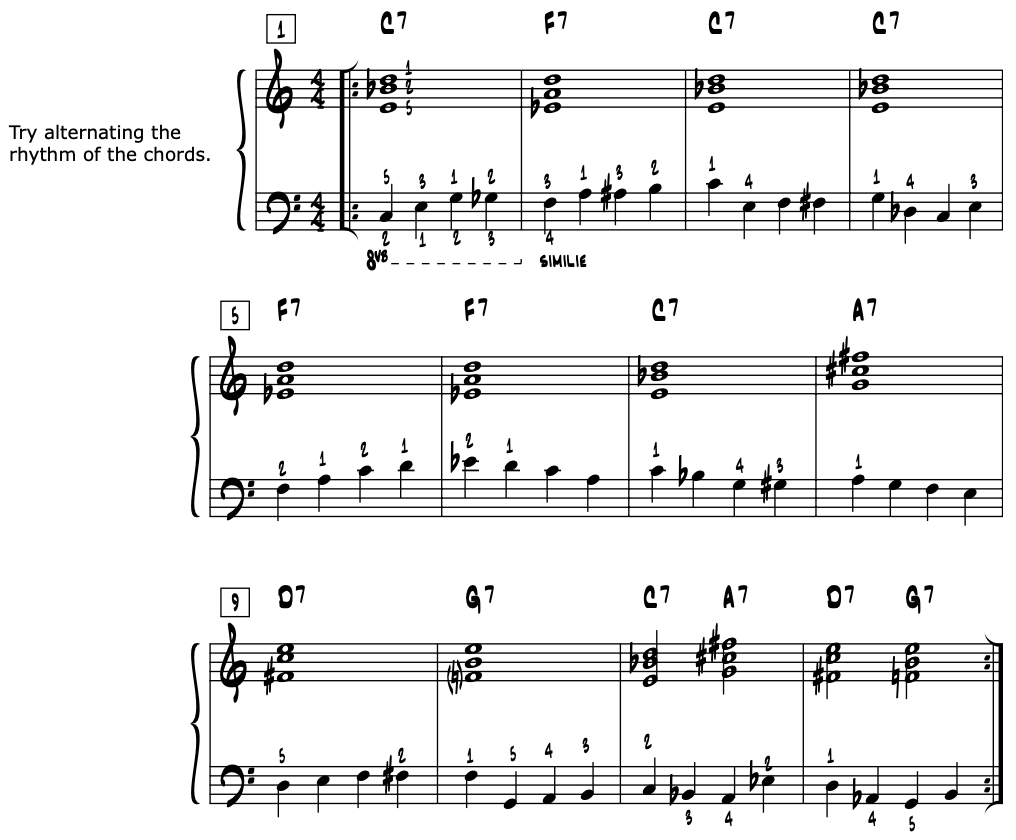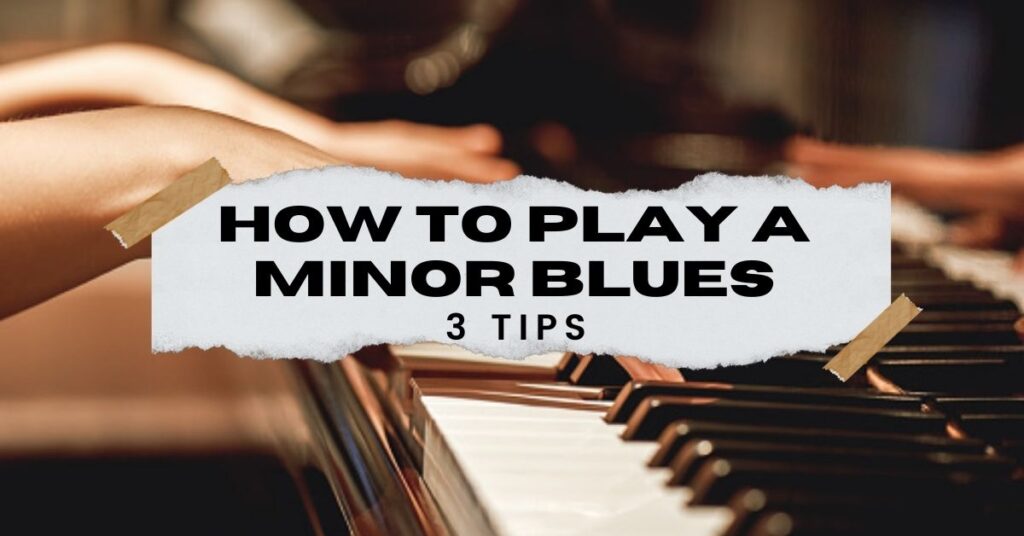Mastering the blues piano is a journey of rhythm, emotion, and technique. A significant part of this journey is understanding the role of the left hand.
The left hand in blues piano is the backbone of the rhythm. It sets the groove, laying the foundation for the melody to dance upon.
In this guide, we will delve into the world of blues piano left hand techniques. We will explore patterns, exercises, and tips to help you master this essential aspect of blues piano.
Whether you’re a beginner or an experienced pianist, this guide will provide valuable insights. It will help you refine your left hand techniques and enhance your overall blues piano playing.
So, let’s embark on this journey together. Let’s dive into the world of blues piano left hand techniques and unlock your potential to create soulful, rhythmic music.
The Role of the Left Hand in Blues Piano
In blues piano, the left hand plays a crucial role. It is responsible for setting the rhythm and creating the groove.
The left hand often plays bass lines and rhythmic patterns. These elements provide a solid foundation for the melody played by the right hand.
Moreover, the left hand contributes to the overall feel of the music. It can create tension, release, and a sense of movement in the blues piece.
Understanding and mastering the role of the left hand is key to becoming a proficient blues pianist. It’s the secret to creating compelling, soulful blues music.
Essential Left Hand Patterns for Blues Piano
There are several left hand patterns that are fundamental to blues piano. These patterns form the backbone of many blues songs.
The most common patterns include the classic blues shuffle, walking bass lines, and boogie-woogie patterns. Each of these patterns has a unique feel and contributes to the overall sound of the blues piece.
Mastering these patterns will not only improve your left hand technique but also your understanding of blues music. It will help you create a solid rhythmic foundation for your blues piano playing.
Here are the three essential left hand patterns for blues piano:
- The Classic Blues Shuffle

- Walking Bass Lines

- Boogie-Woogie Patterns

The Classic Blues Shuffle
The classic blues shuffle is a fundamental left hand pattern in blues piano. It’s characterized by a “swing” rhythm that gives the music a bouncing, groovy feel.
This pattern typically involves playing the root note of the chord followed by a combination of the fifth and sixth notes. The shuffle rhythm is a key element of the blues sound.
Mastering the blues shuffle will give your left hand the strength and flexibility it needs to play more complex patterns.
Walking Bass Lines
Walking bass lines are another essential left hand pattern in blues piano. They involve moving up and down the scale in a smooth, continuous manner.
This pattern creates a sense of movement and flow in the music. It’s often used in slower blues pieces to add depth and complexity to the rhythm.
Walking bass lines require good finger independence and control. Practice this pattern slowly and gradually increase your speed as you become more comfortable.
Boogie-Woogie Patterns
Boogie-woogie patterns are a more advanced left hand technique in blues piano. They involve playing a fast, repetitive pattern that creates a lively, upbeat feel.
This pattern is often used in faster blues pieces and requires a high level of left hand strength and coordination. It’s a great way to add energy and excitement to your blues piano playing.
Boogie-woogie patterns can be challenging to master, but with consistent practice, you’ll be able to play them with ease.
Mastering the 12-Bar Blues Progression
The 12-bar blues progression is a cornerstone of blues music. It’s a sequence of chords that forms the basis of many blues songs.
Your left hand plays a crucial role in this progression. It lays down the rhythm and harmony, setting the stage for the right hand’s melody.
Understanding and mastering the 12-bar blues progression will greatly enhance your blues piano skills. It will give you a solid foundation to build upon and explore more complex left hand patterns.
Remember, practice makes perfect. Keep working on the 12-bar blues progression until it becomes second nature.
Exercises to Strengthen Your Left Hand
To master the blues piano left hand, you need strength and dexterity. Regular practice with targeted exercises can help you achieve this.
One effective exercise is to practice scales with your left hand. This helps to build finger strength and improve your hand’s agility.
Another exercise is to practice left hand patterns. Start slow and gradually increase the speed as you become more comfortable.
Here are some exercises to try:
- Practice scales in different keys.
- Play arpeggios with your left hand.
- Practice the 12-bar blues progression.
- Work on left hand patterns like the shuffle rhythm and walking bass lines.
Remember, consistency is key. Regular practice will yield the best results.
Developing Independence Between Hands
One of the challenges in playing the blues piano is coordinating the left and right hands. This requires a certain level of hand independence.
Start by practicing left hand patterns on their own. Once you’re comfortable, add in the right hand.
It’s normal to find this difficult at first. But with patience and practice, you’ll see improvement.
Remember, slow and steady wins the race. Don’t rush the process. Take your time to develop this crucial skill.
Tips for Coordinating Left and Right Hands
Coordinating both hands while playing blues piano can be a challenge. Here are some tips to help you.
First, practice each hand separately. Master the left hand patterns before adding the right hand.
Next, slowly combine both hands. Start with simple patterns and gradually move to complex ones.
Lastly, use a metronome. It helps maintain a steady rhythm and improves coordination. With time and practice, you’ll see progress.
Improvisation Techniques for the Left Hand
Improvisation is a key element of blues piano. It adds a personal touch to your performance.
For the left hand, start with simple improvisations. You can alter the rhythm or add extra notes to the basic patterns.
Remember, improvisation should enhance the music, not complicate it. Keep it simple and tasteful. With practice, you’ll develop your unique style.
Listening and Learning from the Blues Masters
Listening to blues masters is crucial for your development. Their performances provide valuable lessons in left hand techniques.

Study their style, rhythm, and the way they use their left hand. Try to emulate their techniques in your practice.
Remember, the goal is not to copy, but to learn and incorporate their skills into your unique style.
Practice Strategies for Blues Piano Left Hand
Effective practice is key to mastering the blues piano left hand. It’s not just about the amount of time spent, but the quality of practice.
Start slow and gradually increase the tempo. This helps in building accuracy and muscle memory.
Incorporate a metronome into your practice. It aids in developing a steady rhythm and timing.
Lastly, record your practice sessions. Listening back allows you to spot areas that need improvement.


You are another Lee Evans! You are a real fount of knowledge.
One problem: YOu keep giving us so many ideas & tips. I print them off and have an encyclopedia of information but am somewhat overwhelmed.
Being a teacher I try to break everything down into step one, step two, etc. and you do that but there are so many step one’s! I want to learn it all but am overwhelmed with the amount of knowledge you send us.
Help!
Thanks for that Nancy. Wow, being compared to Lee Evans is an honor!
O.K. so the best way forward is to yes, print and keep the material, however you want to create a plan for yourself that only focuses on 1 or 2 concepts within a period of time. Check out this article for some good pointers too.